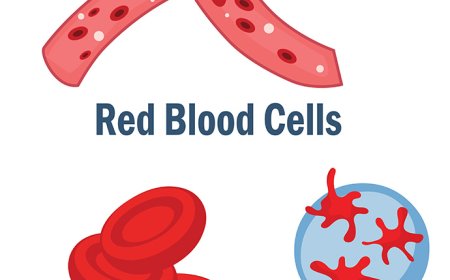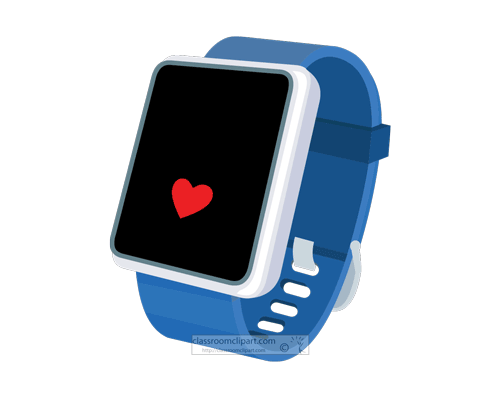Blood for Students: How Red Cells, White Cells, Plasma, and Platelets Keep You Alive
Learn all about blood in this detailed student-friendly article. Discover how red and white blood cells, plasma, and platelets work together to carry oxygen, fight disease, and keep your body healthy. Includes quiz, vocabulary, and summary.
🩸 Blood: The Life-Carrying Fluid That Keeps Your Body Alive
Blood is much more than just red liquid flowing through your veins. It is a powerful, life-sustaining fluid that delivers oxygen, carries nutrients, fights infections, and heals injuries. Without blood, your body would not be able to move, think, grow, or survive.
Your heart pumps blood through a vast network of vessels that reach every part of your body. This movement helps your cells get the materials they need and remove waste they don’t. The average person has about 5 liters (around 1.3 gallons) of blood in their body, and it’s always on the move—traveling the entire body in about one minute.
🩸 What Is Blood Made Of?
Blood may look like a single red fluid, but it's actually a mixture of four main parts, each with a unique job. These parts work together like a team to protect, deliver, and support your body every second.
1. Red Blood Cells (RBCs)
Red blood cells are the most common type of blood cell. They carry oxygen from your lungs to your entire body and bring carbon dioxide back to the lungs to be exhaled. These cells get their red color from a protein called hemoglobin, which binds to oxygen. Red blood cells are shaped like tiny doughnuts without holes and can squeeze through even the tiniest blood vessels, or capillaries.
2. White Blood Cells (WBCs)
White blood cells are your body’s germ fighters. They patrol your bloodstream looking for viruses, bacteria, and other invaders. When they find something harmful, they attack and destroy it. There are several types of white blood cells, each with its own job, from detecting threats to cleaning up the mess after a battle. When you're sick, your body produces more of them to help you heal.
3. Platelets
Platelets are tiny cell fragments that help your blood clot. If you get a cut or scrape, platelets rush to the site and stick together to stop the bleeding. They form a plug and release chemicals that help seal the wound. Without platelets, even small cuts could become dangerous.
4. Plasma
Plasma is the yellowish liquid part of blood that carries everything else. It’s made mostly of water and acts like a highway for red and white cells, nutrients, hormones, and waste. Plasma helps regulate body temperature, balance fluids, and transport important substances where they’re needed.
🩻 How Blood Keeps You Alive
Blood has many important jobs, and each part plays a role in keeping your body balanced and healthy.
Oxygen delivery: Red blood cells bring oxygen to all your body’s tissues so they can breathe and make energy.
Nutrient transport: Plasma carries vitamins, minerals, and nutrients from the food you eat to the cells that need them.
Waste removal: Blood removes carbon dioxide and other waste products from your cells, sending them to the lungs, kidneys, or liver to be removed.
Protection: White blood cells fight germs, and platelets prevent blood loss.
Temperature control: Blood helps keep your body at the right temperature by moving heat around.
💪 How to Keep Your Blood Healthy
To keep your blood doing its job, you need to treat your body well. Here are a few healthy habits:
Drink plenty of water to keep plasma flowing
Eat iron-rich foods (like spinach, beans, or red meat) to help red blood cells do their job
Avoid infections by washing your hands and getting enough sleep
Exercise regularly to keep your heart and blood vessels strong
Limit sugar and junk food, which can affect blood balance
🎉 Fun Facts About Blood
Red blood cells live for about 120 days
One tiny drop of blood can contain millions of red blood cells
White blood cells can live for days or even years, depending on their type
Platelets only live about 5–10 days
Plasma makes up about 55% of your blood’s volume
🧠 Vocabulary
Hemoglobin – A protein in red blood cells that carries oxygen
Red blood cells (RBCs) – Blood cells that transport oxygen
White blood cells (WBCs) – Blood cells that fight infections
Platelets – Small fragments that help blood clot
Plasma – The liquid part of blood that carries cells and substances
Nutrient – A substance your body needs to grow and function
Clot – A thick, sticky plug that stops bleeding
Capillaries – The tiniest blood vessels where exchange happens
Infection – When harmful germs enter your body
Oxygen – A gas you breathe in that your cells need
✅ Interactive Quiz: Test Your Blood Smarts!
1. What part of blood carries oxygen?
A. Platelets
B. Plasma
C. Red blood cells
D. White blood cells
✅ Correct Answer: C
2. What gives red blood cells their color?
A. Water
B. Hemoglobin
C. Plasma
D. Sugar
✅ Correct Answer: B
3. What part of blood fights off germs and infections?
A. Plasma
B. Red blood cells
C. White blood cells
D. Platelets
✅ Correct Answer: C
4. What do platelets do?
A. Carry oxygen
B. Help clot blood and stop bleeding
C. Provide nutrients
D. Make hormones
✅ Correct Answer: B
5. What is plasma made of mostly?
A. Oxygen
B. Blood cells
C. Sugar
D. Water
✅ Correct Answer: D
6. What helps remove waste like carbon dioxide from your body?
A. Plasma
B. Platelets
C. Bones
D. Skin
✅ Correct Answer: A
7. What happens when you're sick?
A. You lose blood
B. You make fewer white blood cells
C. You make more white blood cells
D. Your plasma turns red
✅ Correct Answer: C
8. What should you eat to support red blood cells?
A. Candy and chips
B. Foods with iron like spinach
C. Soda
D. Ice cream
✅ Correct Answer: B
🧒 Kid-Friendly Summary
Your blood is like a superhero team! Red blood cells carry oxygen, white blood cells fight germs, platelets stop bleeding, and plasma delivers nutrients. Blood travels all over your body, keeping you healthy and alive. That’s why taking care of your body means taking care of your blood, too!



















































